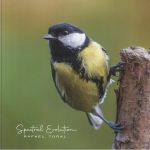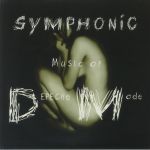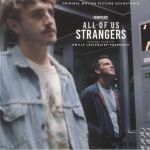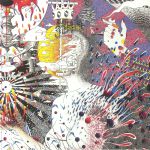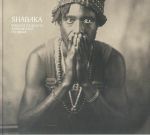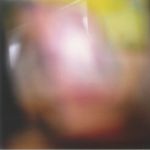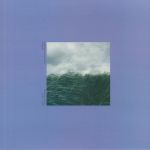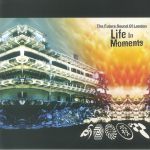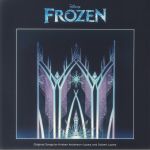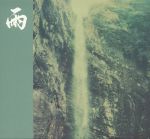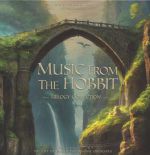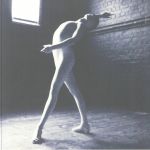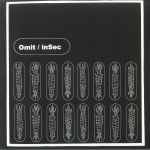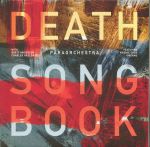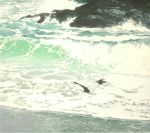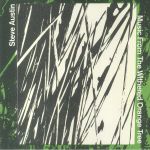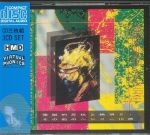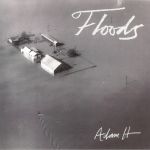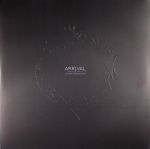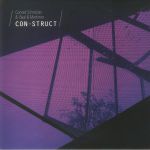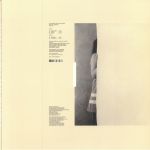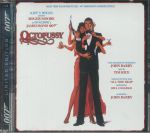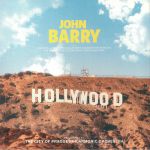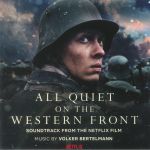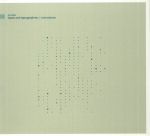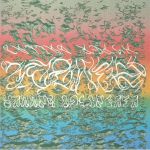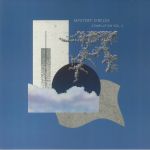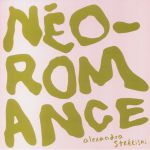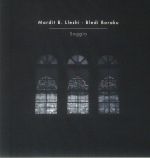100% Compra Segura
Studio equipment
Our full range of studio equipment from all the leading equipment and software brands. Guaranteed fast delivery and low prices.
100% Compra Segura
DJ equipment
Our full range of DJ equipment from all the leading equipment and software brands. Guaranteed fast delivery and low prices. Visit Juno DJ
Filter
Type
Music
Artist
Label
Release Title
Price
Tags
Modern Classical charts
Bestselling Modern Classical vinylPerceive Its Beauty Acknowledge Its Grace (gatefold translucent red vinyl LP (indie exclusive))
Cat: 6516811. Rel: 11 Apr 24
Review: British jazz musician Shabaka Hutchings releases his sophomore album 'Perceive Its Beauty, Acknowledge Its Grace', set to be another distinctive ribbon on top of his well-decorated jazz career including collaborations with Andre 3000 and being a member of Sons of Kemet. The LP marks Hutchings' return to music after giving up the saxophone a year ago. Here he returns to his original instrumental calling, the clarinet, but a wide array of wind and percussion punctuates his musings. Opening track 'End of Innocence', is a brief and understated clarinet and piano marriage. The reverberation of the keys softly drones behind the masterfully precise clarinet lead, with perfectly placed percussion sprinkled throughout. It's introspective, serene and understated - a supremely narrative feel that only instrumental jazz can give off. This pressing is the indie-exclusive red-coloured disc.
… Read moreIntérprete: Mukatsuku Records Chart, ISOUL8 (Volcov)
in stock $27.25
Review: After a two-decade interlude, Jim O'Rourke's Moikai returns with Spectral Evolution, a major new work by Rafael Toral. Making his name in the mid-1990s with influential guitar drone platters like Sound Mind Sound Body and Wave Field (both reissued by Drag City in recent years), Toral has never been one to rest on his laurels repeating past glories. In the early years of the 21st century, Toral began his "Space Program", a 13 year investigation of the performance possibilities of an ever-expanding set of custom electronic instruments, played with a fluid phrasing and rhythmic flexibility inspired by jazz. Dedicated to honing his skills on these idiosyncratic instruments, Toral founded his Space Quartet, where his mini-amplifier feedback integrates seamlessly into the frontline of a classic post-free jazz quartet rounded out with saxophone, double bass, and drums. Since 2017, Toral's work has been entering a new phase, often still centred around the arsenal of self-built instruments developed in the Space Program, but with a renewed interest in the long tones and almost static textures of his earlier work; he has also, after more than a decade, returned to the electric guitar. Spectral Evolution is undoubtedly Toral's most sophisticated work to date, bringing together seemingly incompatible threads from his entire career into a powerful new synthesis, both wildly experimental and emotionally affecting.
… Read more in stock $22.58
Review: Composer and multi-instrumentalist Shabaka Hutchings releases his sophomore LP Perceive Its Beauty, Acknowledge Its Grace', building on his increasingly impressive career working with Andre 3000, Sun Ra Arkestra and heading multiple bands - not least the, now dissolved, The Comet is Coming. The album marks the king's return to music, following his abandonment of the saxophone in 2023. Here he returns to his original instrumental calling, the clarinet, but a wide array of wind is on offer. The first single, the opening track 'End of Innocence', is a succinct clarinet and piano marriage. The reverberation of the keys softly emanates behind the masterfully controlled clarinet lead, with perfectly placed percussion sprinkled throughout. It's introspective, serene and understated - a supremely narrative feel that only instrumental jazz can give off.
… Read more in stock $27.25
Review: Bill Frisell's Orchestras, a collaboration with composer-arranger Michael Gibbs, showcases the transformative power of jazz when paired with symphonic ensembles. The album combines Frisell's trio with the Brussels Philharmonic and the Umbria Jazz Orchestra, resulting in a dynamic interplay between jazz intimacy and orchestral grandeur. Gibbs' masterful orchestrations, inspired by Gil Evans and cinematic scores, seamlessly enhance the trio's telepathic rapport. Frisell's signature shimmering sound blends effortlessly with strings and brass, creating a rich and expressive tapestry. Notably, the collaboration highlights the deep connection between Frisell and Gibbs, a legendary innovator in jazz arranging. Gibbs' intuitive writing draws out the trio's spontaneity and pushes them into uncharted territory. Frisell and Gibbs' mutual admiration and influence create a palpable energy throughout the album, showcasing the transformative power of collaboration.
… Read more in stock $36.32
DEPECHE MODE / VARIOUS
Symphonic Music Of Depeche Mode (clear vinyl LP limited to 300 copies)
Cat: CLOLP 3235. Rel: 18 Apr 24
in stock $29.06
Review: A saxophonist at the pinnacle of his game, Shabaka Hutchings presents 'Afrikan Culture, on which he explores the rich musical traditions of the African continent and combines them with contemporary, self-affirming themes. Remarkably for how well-touted his name is, this is Hutchings' first ever solo LP, bringing it to the masses under the name Shabaka (following on the smash success of Sons Of Kemet and The Comet Is Coming). It's a stunning, existential album which not only pays tribute to the Afrofuturist greats who precede him, but which, of course, looks squarely into the eyes of Afroftuture that will come after him.
… Read moreIntérprete: ISOUL8 (Volcov), Juno Recommends Jazz
in stock $23.35
Cat: HWD 1435921. Rel: 12 Apr 24
Review: Emilie Levienaise-Farrouch's All of Us Strangers soundtrack is a superb trip through plenty of highly atmospheric landscapes that blend delicate piano melodies with haunting electronic textures. Each track paints a vivid portrait, evoking a sense of introspection and emotional depth that only heightens the scenes in the movie. Levienaise-Farrouch's narrative captivates and guides the audience through a range of moods from tranquil introspection to moments of poignant intensity, and as such this soundtrack showcases her exceptional talent for composition and storytelling.
… Read more in stock $33.99
Review: American composer and sound engineer Adam Wiltzie, may not yet be a household name in electronic music yet but it's a safe bet you have heard projects that he has been involved in. Adam is one half of the highly regarded ambient and drone project Stars Of The Lid for the past 30 years and also worked with many popular rock and indie bands as an engineer as well as done composing for film and TV. Eleven Fugues For Sodium Pentathol is the name for his first all original material for a full album. Last year in 2023 brought the untimely death of Stars Of The Lid partner Brian Mcbride. However, Adam's relationship with Kranky records is as strong as ever and that's where his first solo album finds a home. The music is inspired by a recurring dream Adam had where the music he composes makes people die. The music blends heavy emotions from ruin to absolute beauty. A powerful album that has extreme depth and cinematic expansiveness. We hope this will be the start to a very productive solo career that will continue his excellent work that was done with Stars Of The Lid.
… Read more in stock $28.01
Review: Shabaka Hutchings' Perceive Its Beauty is a profound and meditative musical journey that celebrates the richness and grace of African culture. Through a diverse ensemble of renowned musicians, Hutchings invites us to immerse ourselves in a sonic landscape that evokes the beauty and bounty of the Motherland. The album's meditative quality stems from the restraint and collective nature of its creation. The instruments seem to float effortlessly, creating a sonic cloud that carries echoes of Afro-Asian music and the tranquil sounds of nature. Yet, within this understated atmosphere, individual brilliance shines through. The artistry of Jason Moran on the piano and the ethereal voices of Moses Sumney and Eska add layers of nuance and emotional depth. In an era often marked by division and disharmony, Perceive Its Beauty offers a refuge of unity and peace. It invites us to transcend superficial boundaries and embrace the beauty and grace that resides within and around us.
… Read more in stock $13.24
Review: Ryuichi Sakamoto is making a very welcome return here with his first solo album since 2017's async. Milan Records are releasing 12 in January to coincide with the venerated Japanese composer's 71st birthday, and the timing is poignant given the album draws from musical sketches created while Sakamoto battled for two and a half years with cancer. Sakamoto himself describes reaching for his synths as a kind of therapeutic response to a big operation, and so the music carries an added depth of personal experience from one of the most profound ordeals a person can go through.
… Read moreIntérprete: Juno Recommends Leftfield, Juno Recommends Ambient/Drone
in stock $32.43
Far From The Maddening Crowds (Symphonic Rehearsals) (gatefold 2xLP)
Cat: MODENALP 96. Rel: 28 Mar 24
Review: Chicane's 1997 album Far From The Maddening Crowds not only reappropriated a famous Thomas Hardy literary title, it also helped lay the groundwork for a new form of breaks-driven trance music. Now on Modena comes a brand new version of the album, its Symphonic Rehearsals version: a full rerub consisting of total string versions of each track, with brand new string compositions written and performed by Joe Duddell (whose extant performance credits also include James, Elbow and Daughter). The new versions are utter tearjerkers, and not merely for the nostalgia value either; all build on the originally subtle apogees of the original LP, and remind us of why it was so well-received as a landmark release in the first place.
… Read more in stock $23.61
Review: Multi-award winning composer and viola maestro Astrid Sonne is an artist you won't forget in a hurry. Freewheeling between the somewhat regimented, or at least highly intentional world of electronic music production and the looser, more open-ended possibilities of experimental contemporary classical, melding both together in a place which is deceptively close to pop, she runs on improvised sections and meticulously crafted arrangements alike, in ways that feel truly natural. Following her acclaimed 2021 long form, 'Outside of Your Lifetime', with another beauty on Escho, one of many standout alternative imprints active in her native Denmark, Great Doubt is perhaps her most radio-playable effort to date, and yet musically it also embraces some of the most varied influences. From loop-based hip-hop to surreal court music, patient string-focused ambient, to leftfield drum machine pop.
… Read more in stock $20.75
Upon This Fleeting Dream (LP + insert)
Cat: CORTIZONA 017. Rel: 26 Oct 22
Review: Twinkle3 are a trio made up of accomplished flautist Clive Bell and electronic experimenters David Ross and Richard Scott. Their latest project welcomes the legendary David Sylvian into the mix alongside Kazuko Hohki, who was in 80s synth pop oddity Frank Chickens amongst other projects. Their collective venture for Cortizona treads predictably unpredictable territory, where minimalism, sound design and free improvisation merge into a meditative, distinctive whole. The woodwind and electronics intertwine in sublime fashion, resulting in a compelling trip for anyone who appreciates delicacy and risk in their leftfield electronica.
… Read morein stock $17.20
Selected Media 2016-2018 (140 gram vinyl LP)
Cat: ERS 040. Rel: 30 Mar 20
Review: Emotional Response bring you some truly healing sounds from Polish producer Bartosz Kruczynski, who first teamed up with the label as The Phantom for the first round of the Schleissen series back in 2015. He's since delivered a debut album to Growing Bin and released as Earth Trax on Rhythm Section and others. The mood across this collection of pieces produced for Polish studio TVP Culture opens up a rich seam of inspiration around the ambient end of Kruczynski's work through short pieces rich in sonorous delights. From fluttering fourth world-isms to hazy dub soundscapes, this is pure listening pleasure from start to finish.
… Read morein stock $5.70
Review: Legend has it that around 1997, The Future Sound of London decided to make an album that combined the electronic and broken trance-inducing acid the outfit were already renowned for, and progressive rock. As work continued, a decision was made to go full psyche rock, and the result was The Isness by The Amorphous Androgynous. Had the original idea come to fruition, the hybrid sounds therein might be similar to Life In Moments. Originally released in 2015, this record is one of those very special instances in which you're presented with something that genuinely sounds new. Of course, there's plenty owed, too, with moments definitely nodding to the likes of Sabres of Paradise, slow mo dark room chug and other leftfield dance. On the whole, though, the combination of late night jazz, otherworldly electronica, tripped-out space rock, ambient and movie-esque scores is pretty incomparable.
… Read more in stock $25.43
Kristen ANDERSON LOPEZ / ROBERT LOPEZ / VARIOUS
Frozen (Soundtrack) (zoetrope picture disc LP)
Cat: 875413 8. Rel: 12 Oct 23
Review: A cinematic sensation and an instant classic and record breaker, Disney's animated movie 'Frozen' celebrates its 10-year anniversary this year with this special zoetrope double picture disc featuring scenes from one of the, now, most iconic movies of all time moving before your eyes. Included is, of course, Idina Menzel's award-winning score 'Let it Go' which charted around the world and wormed its way into the ears of parents to this day. Not to be slept on, though, is Demi Lovato's rendition that plays over the credits sequence or 'Fixer Upper', the jovial chorus musical number.The perfect Christmas gift for the fan in your life, and trust us, there is statistically one somewhere, no matter how old.
… Read more in stock $33.21
Review: On his return to China in 2019 after a period away, Brock van Wey noticed a "strange, sound emitting item" on the table. It was a handmade 'steel tongue drum', a unique percussion instrument associated with spirituality and meditation in Asian culture. A few days later, van Wey recorded an extended jam of himself playing it, and later overdubbed electronic sounds, melodies, chords and textures. The result is The Depth of Rain, the long-serving ambient and drone artist's second Bvdub album of 2024. Where some of van Wey's ambient sets can tend towards the intense and claustrophobic, The Depth of Rain is a genuinely melodious, evocative and spring-like affair that ebbs and flows wonderfully throughout, providing entertainment and sonic bliss in equal measure.
… Read more in stock $17.39
Music From The Hobbit: Trilogy Collection (Soundtrack) (milky clear vinyl LP)
Cat: DFLP 41. Rel: 11 Apr 24
Review: For the first time ever, this new silver vinyl release combines the iconic music from all the three Hobbit films into a comprehensive collection all masterfully performed by The City of Prague Philharmonic Orchestra. Howard Shore's award-winning compositions for this as well as The Lord of the Rings trilogy have captivated audiences worldwide, often accompanied by live film screenings. The meticulous attention to detail in bringing Tolkien's world to life through music is legendary, incorporating diverse musical styles and instruments to evoke the rich landscapes and characters of Middle-earth. From 'Song Of The Lonely Mountain' to 'Protector Of The Common Folk', this journey through cinematic composing is truly extraordinary.
… Read more in stock $19.72
in stock $26.21
Review: If this is your initial encounter with Omit then buckle up and prepare for some first contact stuff. The South Island New Zealander has been creating otherworldly arrangements since 1990, taking listeners on deep space explorations via sounds that are as inviting and alluring as they are strange and disconcerting. Humans, after all, tend to feel very wary (to put it mildly) about stepping into unknowns. On Insec this is particularly pronounced. The sense of vast is omnipresent throughout the four mammoth tracks, distant tones sound as though they're refracted rays of light bouncing off some satellite or other, or solar sails deployed on a ship exploring a far off cluster of exoplanets. The individual pieces blend perfectly and lead into one another to create a sense of epic odyssey. An adventure through noises that are impactful because of the surrounding silence and their own innate qualities.
… Read more in stock $26.98
Review: The mysterious London-based music collective Sault are in the process of reissuing their first five albums on vinyl, in full, after they were released as a free digital download in late 2022. AIIR is among the lesser-cited of the quintuplet bunch, being a five track EP and sequel to their sixth album AIR. Providing a rapturous counterpoint to that album while building on its choral themes, this LP could consist of anything from outtakes from the making of AIR to true reprises; it's hard to tell. What we do know is that the music here would have been as equally suited to the high-flung parabolae of grandiose mid-century American filmmaking as it now is for the modern music lover. Pieces like 'Still Waters' and 'God's Will' - with their divine harp flourishes, choirs of angels, and complex string and timpani movements - are evocative enough to recall sublime pastoral classics like Watership Down or A Matter Of Life And Death - not just UK music royalty.
… Read moreIntérprete: Mukatsuku Records Chart
in stock $18.94
Death Songbook (gatefold 2xLP)
Cat: 4050538 978018. Rel: 18 Apr 24
in stock $28.81
Review: The LILA label is dropping a wealth of essential new ambient albums this month and Eternell is one of the artists behind them, an alias of Ludvig Cimbrelius who says he has been hearing new music in his mind all of his life. Here he gives it a form in the real world as he offers up real emotional depths and wondrous highs that will encourage deep introspection and firm connections with your inner most self. Mira is full of widescreen pieces, smeared pads and gently rising lines that subsume you in heavenly sonics.
… Read morein stock $7.41
Music From The Withered Orange Tree (LP + insert)
Cat: CDALP 005. Rel: 30 May 23
Review: Originally released in the mid 80's on UK cassette label Bite Back!, this nearly lost gem finds new life 30 years later on Cocktail D'Amore Music. Steve has cobbled together a superbly melancholic electronic concept album. Wistful melodies often evoke sentiments of a lost childhood and hazy English mornings. Each song within remains untitled allowing full perceptive freedom as to what they all communicate, a language for the feelings that have no name. Untitled A1 - A6 leads one along intimate soundscapes of pattering drums and tinkering piano, a sense of closeness and trust develops with the introduction of each new idea much like the beginning of a bed time story. Untitled B1 - B3 then begin to breathe more openly awash in angelic colours before abruptly turning downward on B4, a wall of booming drums and atmospheres from the furthest reaches of the galaxy before the last trio of songs settles gently back on Earth.
… Read morein stock $7.26
Cybernetic Defiance & Orgasm 2: Other Sides Of Henry Kawahara (3xCD with obi-strip)
Cat: EM 1205TCD. Rel: 02 Nov 22
in stock $30.09
in stock $24.14
in stock $6.39
Blue Giant (Soundtrack) (Japanese Edition) (gatefold 2xLP)
Cat: UCJJ 9039. Rel: 02 May 23
in stock $67.98
Arrival (Soundtrack) (gatefold 180 gram vinyl 2xLP + MP3 download code)
Cat: 479678 6. Rel: 02 Dec 16
Intérprete: Giorgio Luceri
in stock $35.29
Cat: SV 161LP. Rel: 12 Dec 22
Review: A monolithic entry into the canon of longform ambient, experimental classical music, Gavin Bryars' The Sinking Of The Titanic receives the reissue treatment via Superior Viaduct. The record was initially produced by Brian Eno in 1975 as the first release on Obscure, and the title piece found Bryars fixating on the ill-fated luxury cruise liner through the perspective of its passengers. It's a haunting and engrossing piece with imperceptible layers of detail woven into its fabric. The accompanying piece, 'Jesus' Blood Never Failed Me Yet', is equally important, revolving around a tape loop of a street singer and bringing the work of players such as Michael Nyman and Derek Bailey into the composition which builds into a powerful crescendo. Quite simply, a seminal work.
… Read more! low stock $35.04
in stock $21.27
ET The Extra Terrestrial (Soundtrack) (40th Anniversary Edition) (limited gatefold 180 gram vinyl 2xLP with obi-strip)
Cat: MOND 279C. Rel: 14 Apr 23
Intérprete: Manu Archeo
in stock $40.29
Intérprete: Joachim Spieth
in stock $15.05
Here In Absence (hand-numberd LP limited to 300 copies)
Cat: IIKKI 023LP. Rel: 20 Mar 24
in stock $27.25
Octopussy (40th Anniversary Expanded Edition) (limited 2xCD)
Cat: LLLCD 1637. Rel: 17 Apr 24
in stock $55.00
The Hollywood Story (Soundtrack) (transparent vinyl 2xLP)
Cat: DFLP 28. Rel: 03 Nov 22
in stock $22.57
All Quiet On The Western Front (Soundtrack) (limited numbered 180 gram audiophile translucent smokey vinyl LP + 4-page booklet)
Cat: MOVATM 369C. Rel: 04 May 23
Review: Music on Vinyl gives the full treatment to Volker Bertelmann's epic score to All Quiet On The Western Front and serves it up on limited and numbered 180-gram audiophile transparent smokey vinyl with a four-page booklet featuring movie still to boot. Set during World War I, the film follows an idealistic young German soldier and received a leading 14 nominations at the 76th British Academy Film Awards, including one for Best Original Score. It is a truly immersive listen that captures the range of emotions conveyed in the film.
… Read more in stock $34.51
Review: Ambient explorer Tapes & Topographies (real name Todd Gauthreaux) tends not to talk too much about his work. Instead, he's content to simply serve up new albums and let the music do the talking. 'Microtones', his latest full-length, is another softly spun, exceedingly immersive affair in which enveloping, dream-like electronic textures, sustained drones and slowly unfurling chords wrap around effects-laden instrumentation (we can identify pedal steel, piano and strings). There are subtle nods to neo-classical, jazz and cinematic soundtracks, but this is grown up, headily emotional, entirely beat-free ambient music of the sort you'll want to get lost in time and again.
… Read morein stock $6.43
Be Opened By The Wonderful: 40 Years Orchestrated (limited gatefold white vinyl 2xLP)
Cat: NBLM 002LPY. Rel: 08 Jun 23
Intérprete: Juno Recommends Rock/Indie
in stock $29.67
Cas Con II (LP + booklet)
Cat: BB 424LP. Rel: 12 May 23
in stock $19.26
Elevate (luminous vinyl 7" + MP3 download code limited to 100 copies)
Cat: MC 056. Rel: 14 Feb 23
Review: Producer and multi-instrumentalist Christopher Royal King goes solo as Symbol for this new and experimental 7" on Mystery Circle. King might well be best known as a founding member and lead guitarist of the orchestral-rock ensemble This Will Destroy You, but is also a skilled composer who has written scores for some top films and documentaries. He embraces a world of melody here as he layers up heavenly and sustained chords with rippling synths into intense, dense, powerful ambient music that awakens the mind, body and soul. 'Hyperballad' is more sparse and designed for daydreaming with its sweeping strings and gentle piano keys.
… Read more in stock $9.60
in stock $23.61
VARIOUS
Compilation Vol 1 (LP + MP3 download code + sticker limited to 250 copies)
Cat: MC 020. Rel: 14 Feb 23
in stock $15.18
Neo Romance (LP in spot-varnished sleeve)
Cat: 196587 82581. Rel: 31 Mar 23
in stock $20.50
! low stock $23.85
Music From Burden Of Proof (Soundtrack) (limited silver vinyl LP + MP3 download code)
Cat: WAST 064CLP. Rel: 29 Jun 23
in stock $19.47
Zoos Of The World
The Big Game Hunters See The Cheetah
Western Dragon (part 3)
Western Dragon (part 2)
Moon Journey
Music For Advertising #6
Black Eye (main Theme)
Western Dragon (part 1)
Music For Advertising #7
Captai DJ Disco UFO (part 2)
Three Tv Ids
Music For Advertising #8
Love Is A Grade
The D-bee's Cat Boogie
Black Eye (End Credits)
in stock $11.93
in stock $10.13
in stock $24.39
Review: The fourth ever solo studio album from the acclaimed electronic artist and composer Laurel Halo, Atlas is intended to guide the listener through their own subconscious mind, coming as an intense sequence of soaring ambiences and beatless jazz montages. Finding its footing in instrumental improvisation by Halo herself, plus featuring artists Coby Sey, James Underwood and Lucy Railton - and then blowing any assumptive connotation with jazz out of the park with its subtly effected vocal processing and electronic tinkerings and washes thereafter - fans can be sure that this is not going to be your stock experimental affair.
… Read moreIntérprete: Juno Recommends Ambient/Drone
in stock $24.39




